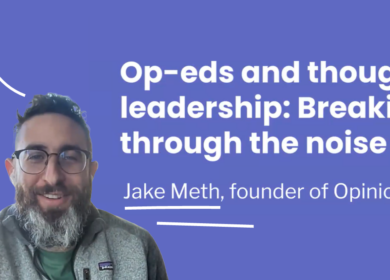
By Bridget Kow
The Hoffman Agency, China (Shanghai)
A valuable tool in any communications professional’s arsenal is his or her ability to read and analyze media coverage, turning news articles into usable intelligence. That includes preparing reports to determine what is being said — positive or negative — about the company, its brand or an issue that can affect it. In addition, sound media coverage analysis can help companies track the strength of their communications campaigns, discover the nature and extent of various trends, and obtain insights on how media and other opinion leaders are responding to their brand, products and messages.
For example, let’s look at an analysis of China’s tech scion Baidu, Inc. We are addressing its media coverage across the decade, leading up to August 2015. In this live example, we can showcase the power of media coverage analysis and how it should play a bigger role in a company’s communications toolkit.
Unsurprisingly over the years, Baidu has made itself a household name in China. From its coverage volume, we see clear increases across the years. Coverage volume numbers by themselves do not provide enough valuable insight, but paired with an in-depth analysis of the media stories, they give actual insight into what is going on.
For example, in 2010 Baidu saw a huge spike in coverage volume (from 5,000 pieces to 9,000 pieces!). What caused that? Was it due to their own campaigns?
Nope.
Looking into stories published in 2010, we found another reason for the spike. We tied the increase of its coverage numbers to a particular competitor movement: Google’s withdrawal from the mainland Chinese market and loss of its search dominance in China. That shocking move by Google was the leading cause, and by riding on the trending news, Baidu was able to leverage it to churn out positive news pieces about itself.
The same data collated also showed that Baidu maintained its coverage volume for the next two years (an average 8,900 pieces) until 2012 when there was a significant decline.
What was the cause of the drop in numbers?
This is where we applied additional in-depth research into the company’s issues and its competitors. A deep dive into 2012’s stories showed that Baidu had a series of negative news for its failed joint-venture with Japanese ecommerce giant Rakuten and its facing anti-competition issues in China. The main drop in coverage volume was due to its competitor Qihoo, which entered the domestic search market that year, hogging most of the news headlines.

Then we looked into the subjects of Baidu’s media coverage. We noticed that like many listed companies, it follows a modus operandi on pushing out massive amounts of corporate communications in the form equity news, corporate news and any mergers/acquisitions to fulfill their listing obligations and updating investors. On average, two-thirds of their coverage is related to corporate updates.
Diving deeper into the media coverage subjects, we also revealed that the increase in certain topics correlates with Baidu’s shift in business focus from online advertising to a tech company that goes beyond search engine services with diversified business interests.
The chart below details the fall on coverage about “Advertising” for Baidu across the past five years.

From 2012, we observed a steady increase in stories that cover subjects such as “Research and Development,” “Science and Technologies” and “Personal Technology” further demonstrating that Baidu is moving the conversation toward areas of interest that it is taking on (see chart below). In addition, Baidu is evolving and riding on the shift in hot news topics to highlight other business focuses. The gradual increase of its voice in those subjects proves that the company has been successful. This also highlights how good media coverage analysis can help determine the company’s share-of-voice in the specific up-and-coming trends in the market.

It would certainly take more than one blog post to analyze the full scope of Baidu’s media coverage. But taking Baidu as an example, we have shown that media coverage analysis, when pegged with business logic and intelligence, can be instrumental in providing valuable insight to trends and better gauging the effectiveness of their communications.
More importantly, as PR professionals we should not just look at the face-value of media coverage and its “supposed ad value.” Instead, we should make sound media coverage analysis a de-facto part of our work and part of the toolkits for clients, leveraging its insights to help craft more effective communications strategies and address challenges to getting the client’s messages across to target audiences.
Tips to Improve Your Media Coverage Analysis
When taking on media coverage analysis, one should determine the expectations and objectives, as well as the limits of the analysis and the indicators one wants to measure. That way, we can maximize the insights we derive from the coverage.
Questions to ask when reviewing media coverage: 4Ws, 1 HOT
Who? — What media are reporting on the subject under analysis? Whi ch journalists?
What? — What is being reported? What is the key message?
Where? — What communication channels are being used? Is it a press launch, interview, byline?
When? — What is the spread of coverage over time?
How? — How is the key message being used?
Organization /Partners? — Are the items reported related to any authorities? Or to local partners, beneficiaries or projects?
Topics? — What topics are most represented in the press coverage? In which was the highlight of the news coverage?

